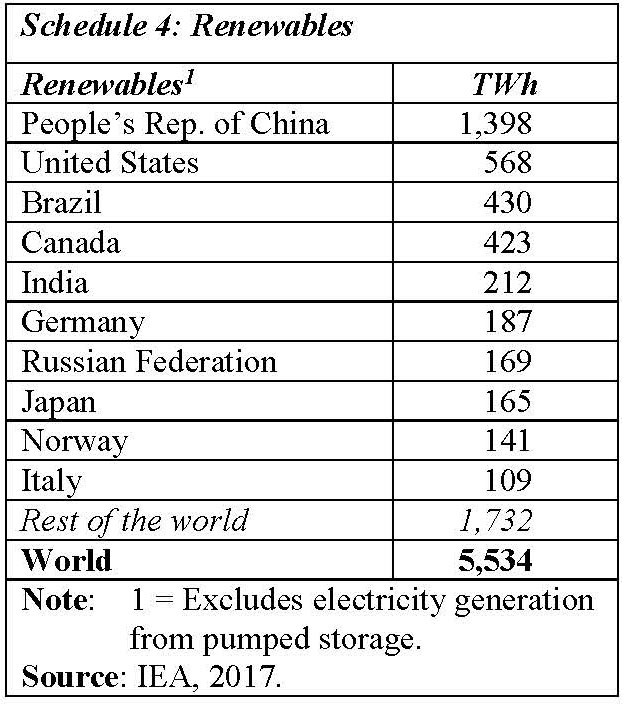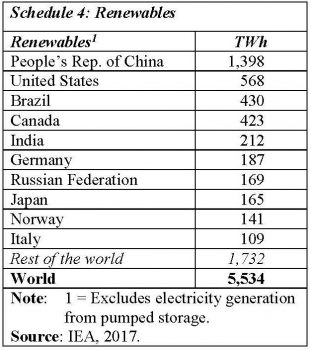Decision Rule 3
Last week’s column continued the exploration of Guyana’s natural gas prospects, both “associated with/and not associated with” its recent substantial petroleum finds. That discussion has placed me in a position where I can now confidently proffer a third decision rule. This Rule posits that: in light of Decision Rule 2, which readers would recall advances the view that a state-owned oil refinery is neither commercially nor economically justifiable; (mainly due to 1) its estimated cost and 2) Guyana’s present financial and economic circumstances) I would recommend Government shifts focus towards exploring the potential usage of natural gas as a substantial replacement investment in downstream value added for the petroleum sector.
Significantly, over the medium to long term, last week’s column also drew attention to Government’s commissioning, through Energy Narrative (a network of Caribbean energy experts and strategic market analysts) a “desk study” designed to evaluate the size, along with, the technical and commercial options available, for developing Guyana’s natural gas resources.
 However, economic logic dictates that Decision Rule 3, should be pursued dependent on the advice offered by Energy Narrative’s “desk study”. Presently, Guyana’s Government has already publicly identified three options for natural gas usage as an energy input. These are 1) electricity generation/co-generation 2) value added alumina processing of its domestic bauxite resources, and 3) the establishment of one or more industrial parks, appropriately located countrywide in order to maximize national economic benefits
However, economic logic dictates that Decision Rule 3, should be pursued dependent on the advice offered by Energy Narrative’s “desk study”. Presently, Guyana’s Government has already publicly identified three options for natural gas usage as an energy input. These are 1) electricity generation/co-generation 2) value added alumina processing of its domestic bauxite resources, and 3) the establishment of one or more industrial parks, appropriately located countrywide in order to maximize national economic benefits
Fundamental Contradiction
Although, as previously reviewed, the Pedro Haas’ feasibility study clearly signifies that a state refinery would be an extremely risky financial and economic investment for Guyana (and I accept this advice), my principal concern about the state oil refining proposal runs deeper. In truth, I believe that such a refinery fundamentally contradicts the sustainable development path (the Green State), which Guyana has committed to as its aspirational development goal.
As readers would know, the Green State developmental goal embodies both the letter and spirit of the United Nations Sustainable Development Goals (2015-2030), which replaced the former Millennium Development Goals (2000-2015) as a solemn national and international commitment. From this perspective, the pursuit of constructing a state oil refinery (given its “dirty” features, as well as Guyana’s present economic/financial circumstances) fundamentally contradicts the political economy development dynamic, which is supposed to be driving public policy. This conclusion therefore, leads me to Decision Rule 4. This Rule will be detailed next week. However, I should let readers know upfront that Rule 4 falls somewhat “outside the box”, basically because, as will be seen, it seeks to redirect the focus for exploiting first oil, radically.
For the rest of today’s column I shall develop this thesis and conclude next week. I would then wrap-up my discussion of the penultimate topic on the coming time of Guyana’s oil and gas industry.
The Background to Decision Rule 4
Let me begin this explication of Rule 4, by reminding readers that Guyana has recently solemnly committed itself to both the global goal embodied in the United Nations Framework Convention on Climate Change (UNFCCC), through its Intended Nationally Determined Contribution (INDC) 2016, and the regional goal embodied in the Caricom Sustainable Energy Roadmap and Strategy (C-SERMS). Both goals explicitly target energy development, centered on the national generation of agreed renewable energy targets over fixed timelines (see Schedules 1 and 2).
The revised 2016 INDCs provided under the UNFCCC are displayed in Schedule 1 below:
Guyana’s commitments under C-SERMS are reproduced in Schedule 2. Both of these commitments reflect as well as inform dramatic changes in the roles of renewable energy in the global economy.
Renewable Energy: Global Context
Thus the most recent available data reveal that, out of a total global primary energy supply (TPES) of 13,640 Mtoe, over 13 percent (1,784 Mtoe) comes from renewable sources. Solid biofuels/charcoal remain the largest source in developing countries (nearly two-thirds), followed by hydro power. The remainder is mainly geothermal, liquid biofuels, biogases, solar, wind and tidal. Over the past three decades renewable energy growth has been 2.0 percent per annum, which is higher than the overall global average annual rate of growth of TPES.
Currently, renewable energy sources are the third largest contributor to global electricity supply; accounting for more than one-fifth of world electricity generation. Coal (39 percent) and gas (23 percent) held respectively, the number 1 and 2 positions.
In global electricity generation today, hydropower clearly dominates, (supplying over 70 percent) of the world renewable supplied electricity. Biofuels (solid and liquid) plus waste play marginal roles (combined only 1.9 percent of world electricity). Geothermal, solar, wind and tidal are growing rapidly but account for less than five percent of world electricity supply, but more than one-fifth of the renewable supply. Over the past three decades electricity generation from renewable sources has grown on average by 3.6 percent per annum. The result is that, while about three decades ago (1990) a little less than one-fifth of global electricity (19.4 percent) was from renewable sources, by 2015 the percentage share had reached 22.8 percent.
To complete this general picture Schedules 3 and 4 provide summary data on renewable energy generation by Region and selected countries.
Conclusion
Next week I wrap-up discussion of this topic by revealing the linkage of these data to Decision Rule 4.










